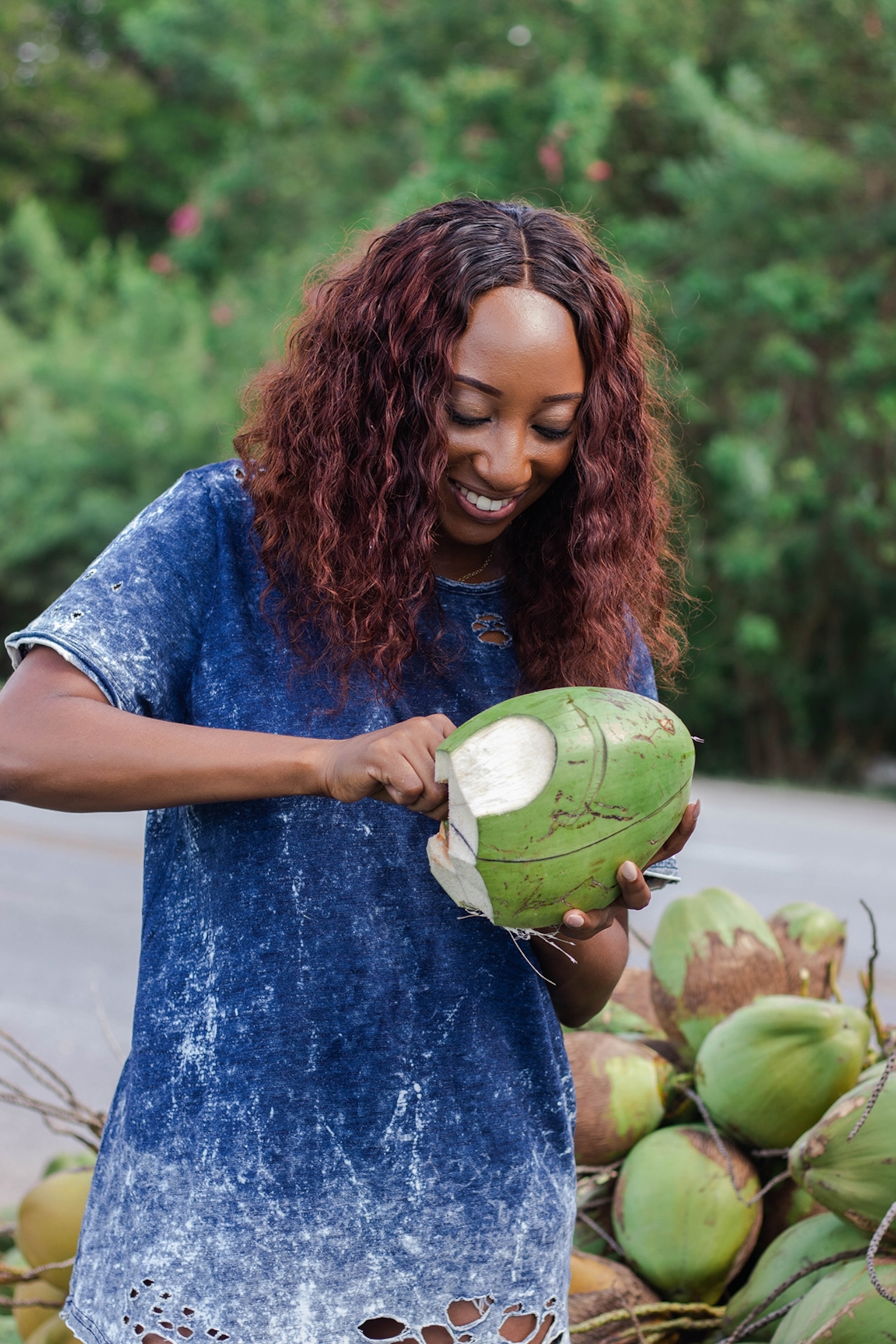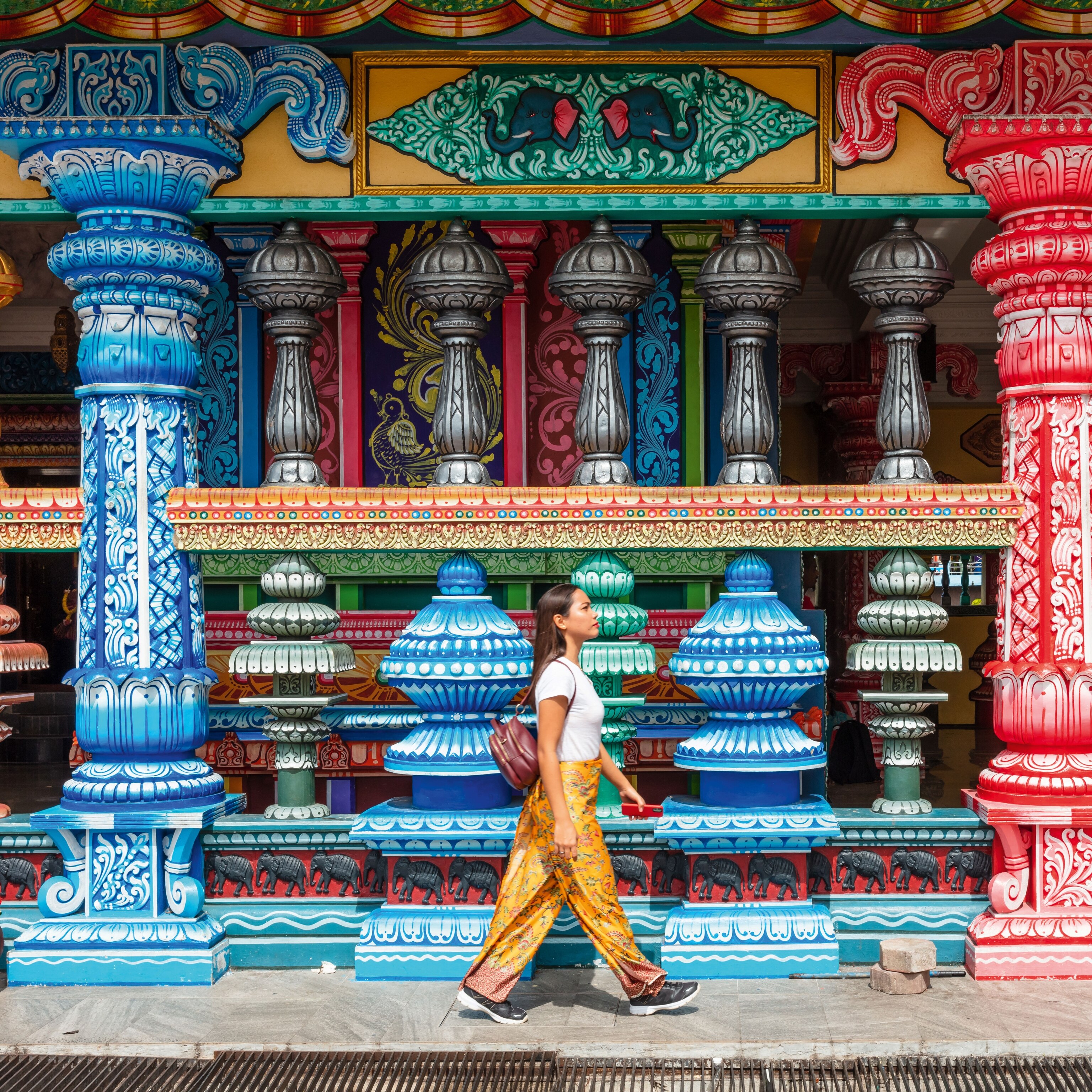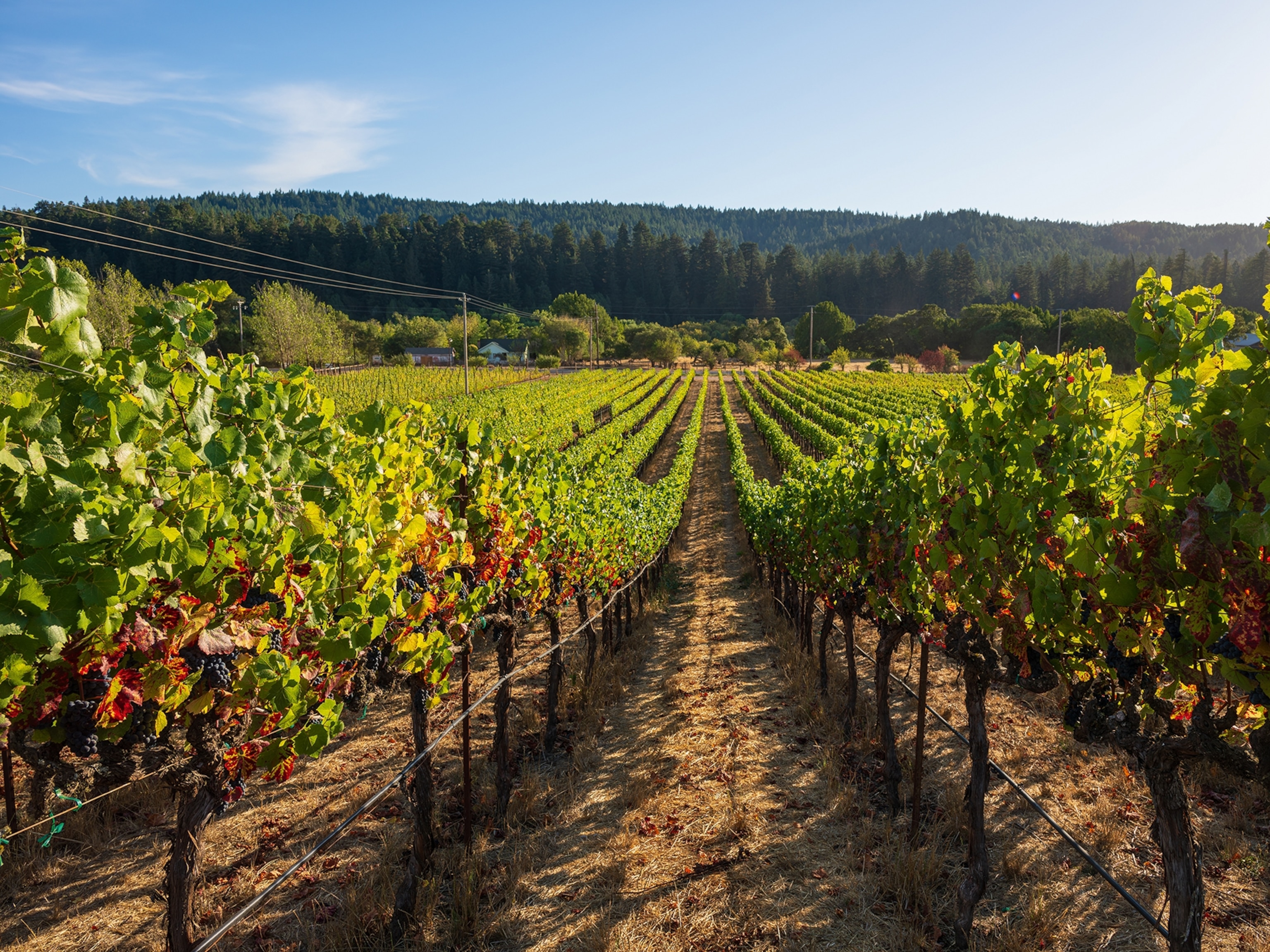Where to eat in Barbados, from fish shacks to innovative restaurants
Hearty portions of pork and fish washed down with beer or rum are the traditional staples of Barbados — but things are changing, particularly in the less-visited northern hills and along the east coast.

“You’re going to eat like a Bajan today. We don’t stop until our waistlines stretch,” says Paulette de Gannes to the group of us standing in Bridgetown’s Independence Square. With Paulette, from Lickrish Food Tours, as our guide we’re about to embark on a walk, stopping at restaurants, markets, food trucks and more on a three-hour culinary marathon. “Bajans love their food,” says Paulette laughing. “Eating the way we do in this heat, you start to feel heavy and slow. You’re going to want to sleep.”
(Five things to know about Bajan food and drink)
Sleep isn’t an option, however, as I’m here during the annual Barbados Food and Rum Festival and, as well as knowing how to eat, Bajans know how to throw a party. The festival is a mash-up of rum-fuelled street parties, sunrise beach events, rum distillery tours and tastings, plus cocktail demonstrations. There are cooking demos too, with local chefs exercising very un-Bajan portion control to dish up mercifully bite-size, refined versions of traditional dishes.
It’s a celebration of the island’s increasingly innovative modern food and drink scene, but I’m squeezing in a grassroots food tour to get an insight into Barbados’s culinary heritage.
Roughly triangular in shape, the 166sq mile island isn’t technically Caribbean. Surrounded by the North Atlantic, it’s 99 miles east of the Caribbean Sea. As such, it was the first landfall for some of the ships from the African continent and became a British colony during the 17th century, only gaining full independence in 1966. It was the Dutch and not the British who introduced sugarcane in 1639 (the ‘white gold’ used to make rum), I learn as we zigzag through Bridgetown’s ramshackle streets. It’s a low-key little capital, with pastel-painted warehouses lining the waterfront. It was the Portuguese who bequeathed a love of salt cod and named the island ‘Os Barbados’ (‘bearded men’) after its shaggy fig trees. Other interesting facts I pick up: the grapefruit originated here and many Bajans like to dip their fruit in the sea for a salty kick — as homegrown superstar Rihanna recently demonstrated.
Our first stop, Tim’s Restaurant, is a casual joint above a pawnshop. Perching on stools on the balcony, we devour a mound of well-seasoned pork, marinated overnight in turmeric, paprika and scotch bonnet peppers, with pickled cucumber and cassava. “You’re not eating like a Bajan unless you’re eating pork — with starchy root vegetables,” Paulette says. “Chicken is the thing we eat most, pork is the thing we like most — fish is just there.”
Which isn’t the whole story, of course. We join a queue at the popular Hot Legendary Fish Cakes food truck, a scruffy orange trailer dishing up battered balls of salt cod with a Bajan twist. “Fish cakes are number-one on the island, hands down. We eat fish cakes for breakfast, lunch and dinner. We eat them with a pepper sauce so hot it can cause your eyes to bleed,” says Paulette. They deliver on punchy spice and my eyes soon water from the heat.

Fish is also the focus each weekend when normally sleepy fishing villages swell with locals and visitors for legendary Friday ‘fish fries’. Mahi-mahi, tuna, marlin, swordfish and flying fish are tossed on barbecues, the beer flows and the weekend begins. That night, I head to one of the biggest, in Oistins on the southwest coast. Lights twinkle at the stalls along the waterfront, music thumps and people mill around and play dominoes at rustic tables. Huge, smoking grills sizzle. I grab a plate piled high with flying fish, rice and peas, macaroni pie and salad — it’s a mammoth feed, not fancy but filling in true Bajan style.
The next morning, I’ve booked a taxi to take me to the less-trampled parts of the island, but a fish market is my first stop. You can’t beat a taxi driver’s know-how and Marlon Webb is the ideal guide to Bridgetown’s fish market, on the edge of town. We wander the sluiced concrete alleys between the stalls, chatting to the fishmongers filleting red snapper and preparing swordfish and lobster. I quiz Marlon on cou-cou and flying fish, the island’s national dish. “We usually eat it fried but the best I’ve tasted was roasted on a beach straight from the sea. It’s also good rolled and seasoned in a broth,” he says.

Our next stop is more low key, a tiny market on the beach at Pile Bay, on the outskirts of the capital. As we arrive, a small boat approaches the shore and two men — one clad in a wetsuit — jump out onto the sand. Ian Watt, a spear fisherman, tells us he’s been out since 5am, diving to around 100ft for parrot chub. “I give thanks if I go out with nothing and come back with something,” he says. The ‘something’ he shows me is shimmering and rainbow-hued.
Continuing north up the west coast, along a road lined with sugarcane fields, the settlements get smaller. Once the mainstay of the island’s economy, sugar replaced tobacco as the main crop on the island after the market price for the latter plummeted in the 1640s. By the 18th century, there were more than 600 sugarcane plantations here, worked by enslaved people from Africa, with most of the sugar shipped to Europe. Today, there are just two sugar factories left and four rum distilleries.
Mount Gay, in the remote rural parish of St Lucy, dates to 1703 and is the world’s oldest rum distillery. It’s a sprawling complex of warehouses surrounded by fields. Rum, I learn, as we follow our guide, Tina Forde, from the spring to the fermenting room, is just water, molasses and yeast — nothing else.
After we peer into the huge vats of gooey molasses, trail past giant oak fermenters and copper pit stills, and meander through the dimly lit bond houses containing barrels, Tina hands us over to Ria Cox in the tasting room. “Don’t swirl the rum, that agitates the alcohol. You don’t want to make it angry,” she says, rum memorabilia on the exposed stone walls behind her. “On the nose, there’s vanilla, banana, cinnamon, nutmeg.” We next sip a rum that’s been aged in whisky, bourbon and cognac barrels. It’s dark, deeper, smoother. “It’s baked goods. And grandma’s Christmas,” says Ria.
As I continue on to the east coast, it’s easier to get a sense of the island’s agricultural heritage and the handful of innovative projects looking to the future of food production. With most of the land given over to sugarcane crops for centuries, Barbados has never been self-sufficient — a problem highlighted during Covid lockdowns and that it’s now seeking to address.

Situated in the hills above the surfing village of Bathsheba, PEG (People Environment Growth) Farm & Nature Reserve is a 108-acre project run on biodynamic principles. It’s the vision of former rally driver Paul Bourne. “Nine years ago, this was all sugarcane; there were no roads, just bush,” he says as we gaze from the cliffs over a tangle of forest towards the coast below.
He’s established a field-to-fork cafe, medicinal herb garden and beehives. We walk along grassy tracks, past cattle, turkeys and pigs wallowing in mud. He shows me plots that he rents out to farmers who share his pasture-fed, pesticide-free vision and dedication to restoring soil health. There are tours, an off-grid campsite and he has plans to build an eco resort on the cliffs — a sustainable farm stay.
Jumping back in the taxi, I head to my final stop a few miles away. Coco Hill Forest is part rewilding project, part regenerative forestry initiative. Over 300 metres above sea level, the 53-acre site is home to one of the island’s last remnants of endemic tropical forest. Barbados lost much of its native flora when the land was turned over to sugarcane, owner Mahmood Patel tells me as we wander around his nursery, past beds of turmeric, basil and rosemary. Over the past eight years, he’s planted around 80 varieties of tree and plant, including mahogany, teak, black pineapple and sugar apple.
The planting mimics the forest’s natural layers, with a canopy of coconut, bananas beneath that, then ginger. “The idea is to create an edible forest,” Mahmood explains as we hike paths through the trees. He shows me how he’s terraced the land and planted lemongrass to help prevent soil erosion, then plunges into the undergrowth to return with a giant bay leaf. On the drawing board are a museum of agriculture, sustainable eco-lodges and a forest-to-fork cafe. It’s a world away from the resorts on the other side of the island. “This will be my life’s project. Next year, I’d like to host a Food and Rum Festival event — food from the forest,” he muses.
Mahmood’s passion is contagious and the forest is already starting to bear fruit. Soon, in the not too distant future, eating like a Bajan might start to look very different indeed.

A taste of Barbados
Cocktail Kitchen, St Lawrence Gap
Offering a contemporary take on Caribbean cuisine, this is one of the hottest tables on the island, run by one its coolest chefs, Damian Leach. Be sure to try his signature dish: smoky, fire-roasted breadfruit topped with lobster, tobiko (flying fish roe), hot pepper sauce and aioli. Other highlights include seacat (octopus) and shrimp ceviche, and flying fish tacos. Inside, it’s all tongue and groove and vibrant, modern artworks. Bar staff mix signature cocktails such as the Canela 22 (local rum, cinnamon syrup, cherry liquor and citrus) for a hip, young crowd. From 46 BBD (£18).
Cuz’s Fish Shack, Hastings
This legendary takeaway joint is located on the beach near the Hilton Barbados Resort hotel. Grab a ‘cutter’ and tuck into it sitting on the sand. The famous sandwich consists of a crusty roll stuffed with crispy fried fish doused in pink pepper sauce, with or without cheese. From 12 BBD (£5).
Pat’s Place, Oistins
This is one of the most popular beachfront shacks on the island; head here for the Friday ‘fish fry’ and choose from a menu that might include flying fish, mahi-mahi, swordfish and red snapper. The fish is served with rice and peas, sweet potato, roasted breadfruit or macaroni pie. Grab a seat at a wooden table outside, among the cluster of waterfront eateries just off the main drag, and wash it all down with a chilled Banks beer. From 30 BBD (£12)
Five food finds
1. Breadfruit
Growing to the size of a football, this sweet, nutty fruit can be eaten pickled, fried, roasted or mashed.
2. Mauby
A drink made from the bark of the mauby tree, which is boiled up with orange peel, nutmeg, cinnamon and cloves and then sweetened.
3. Bajan Cherry
A local superfood that’s one of the richest natural sources of vitamin C in the world; it contains around 50 to 100 times more than an orange.
4. Guava cheese
Guava pulp is stirred over a high heat with sugar, lime juice and spices and then left to set into a fudge-like slab.
5. Bajan sweet bread
Bajans are famously sweet-toothed and love this heavy bread, which is like a soft biscotti, packed with coconut, raisins and cherries.
British Airways has seven nights, room only, in Barbados, including flights from London, from £792 per person. This year's Barbados Food and Rum Festival takes place from 19 to 23 October.
To subscribe to National Geographic Traveller (UK) magazine click here. (Available in select countries only).







